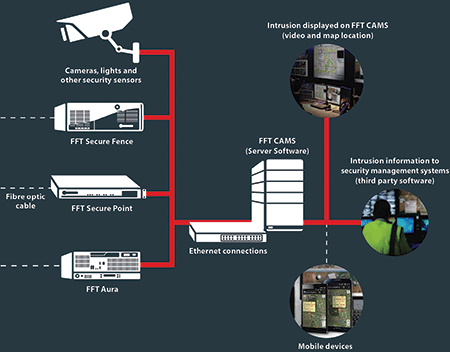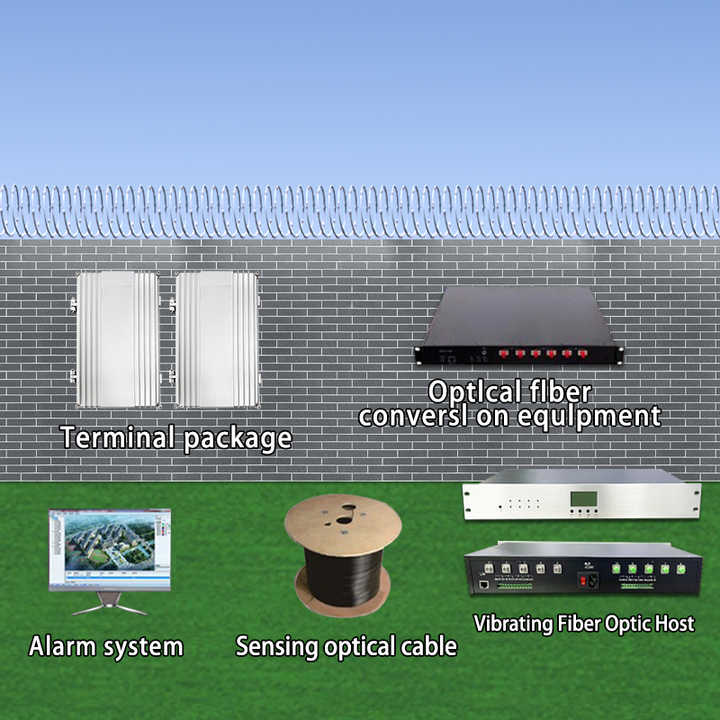A Comprehensive Guide to Fiber Optics Infrastructure for Security Installations
A Comprehensive Guide to Fiber Optics Infrastructure for Security Installations
Blog Article
Secure Your Residential Or Commercial Property With Reputable Fiber Optic Security Solutions
In an age where protection dangers are significantly advanced, the need for effective defense services is critical. Fiber optic safety and security systems stand apart by providing exceptional dependability and performance, leveraging innovative light transmission innovation to enhance security capacities. These systems not just give immunity to electro-magnetic disturbance yet likewise promise lasting cost effectiveness with reduced upkeep requirements. The choice to invest in such a service entails cautious factor to consider of various elements. Recognizing the details of fiber optic safety can brighten the course to safeguarding your property much more effectively. What elements should be explored to maximize your investment?
Benefits of Fiber Optic Security
Fiber optic safety and security remedies use a series of benefits that make them increasingly important in today's digital landscape. One of one of the most significant benefits is their remarkable bandwidth capability, which permits for the transmission of big amounts of data over fars away without significant signal destruction. This capacity is especially advantageous for safety systems that rely upon high-def video monitoring and real-time tracking.
Furthermore, fiber optic wires are naturally extra safe and secure than typical copper electrical wiring. They are immune to electromagnetic disturbance, making them much less vulnerable to hacking or eavesdropping. This enhanced security is essential for protecting delicate data and maintaining the integrity of security systems.
In addition, fiber optics are a lot more sturdy and immune to environmental factors, such as wetness and temperature level variations, making certain long-term dependability and decreased upkeep expenses. The lightweight nature of fiber optic cable televisions likewise streamlines installment processes, permitting better flexibility in system layout.
Just How Fiber Optic Systems Work
In contemporary security applications, the operation of fiber optic systems counts on the concepts of light transmission via flexible glass or plastic fibers. These fibers are created to lug light signals over fars away with minimal loss, making them ideal for transmitting information associated with safety and security surveillance. The core of the fiber, bordered by a cladding product, guarantees that light signals remain contained within the core via a phenomenon called complete internal representation.
When incorporated right into protection systems, fiber optic cables can transmit data from numerous sensors, such as video cameras, movement detectors, and alarm systems, to a main monitoring terminal. The high data transfer capacity of fiber optics enables the transmission of big quantities of information concurrently, enabling real-time surveillance and punctual feedback to possible threats.

Kinds of Fiber Optic Safety Solutions
Different types of fiber optic security services have actually arised to improve security and defense throughout various environments. One prominent remedy is fiber optic border invasion discovery systems (PIDS), developed to keep track of and secure property boundaries via the detection of vibrations and disruptions along fiber optic wires. These systems offer real-time informs, allowing timely responses to unapproved gain access to efforts.
Another effective service is fiber optic video monitoring. This modern technology leverages high-def video cameras connected by means of fiber optic cable televisions to send video information over lengthy distances without considerable loss of high quality. This setup is specifically advantageous in extensive areas, such as flight terminals and commercial sites, where standard copper cable televisions might falter.
In addition, fiber optic sensors are progressively used for environmental tracking, discovering adjustments in temperature, pressure, or acoustic signals that could show security breaches or dangerous problems. These sensing units offer high sensitivity and precision, making them perfect for important framework protection.

Installment and Maintenance Tips
Reliable installation and upkeep of fiber optic safety and security options are crucial for ensuring their optimum performance and durability. Fiber optic cables should be routed firmly, staying clear of sharp bends or spins that could jeopardize their honesty.
During installation, it is a good idea to conduct extensive screening of the system to confirm that all components are functioning correctly. Regular maintenance checks ought to be arranged to check the fiber optic cords for any indications of wear or damages, in addition to to make certain that connections remain safe and secure. Cleaning up the connectors periodically is additionally vital to avoid signal loss due to dust or debris.
In addition, keeping an upgraded inventory of mounted elements and their requirements can assist in simpler troubleshooting and upgrades. By adhering to these installation and maintenance tips, residential property owners can make best use of the performance of their fiber optic protection services, guaranteeing a dependable defense versus possible threats.
Contrasting Expenses and Performance
When examining fiber optic safety services, understanding the equilibrium between prices and performance becomes critical (security fibers). Organizations must consider the ahead of time financial investment, recurring upkeep expenses, and the long-term worth these systems give. While fiber optic systems might require a higher preliminary installment special info expense contrasted to traditional copper wiring, their resilience and decreased vulnerability to electro-magnetic disturbance frequently convert to reduced maintenance costs gradually
Performance is another crucial factor; fiber optic protection systems use improved data transmission rates and enhanced dependability. They can cover bigger ranges without signal deterioration, making them ideal for expansive properties or remote places. Additionally, the high data transfer capability supports innovative protection applications, such as high-definition video surveillance and real-time monitoring, which are important for extensive security monitoring.
Ultimately, the option between cost and effectiveness ought to be led by specific security demands and risk analyses. Organizations should assess their distinct needs, considering aspects like residential or commercial property size, protection hazards, and technical developments. By performing a complete cost-benefit evaluation, stakeholders can make enlightened choices that straighten with their security goals while making certain an audio investment in fiber optic technology.
Conclusion
In verdict, fiber optic safety and security options provide significant benefits in terms of efficiency, integrity, and resistance to ecological interferences. Ultimately, the fostering of fiber optic innovation represents a forward-thinking strategy to protecting properties against progressing safety and security hazards.
Report this page